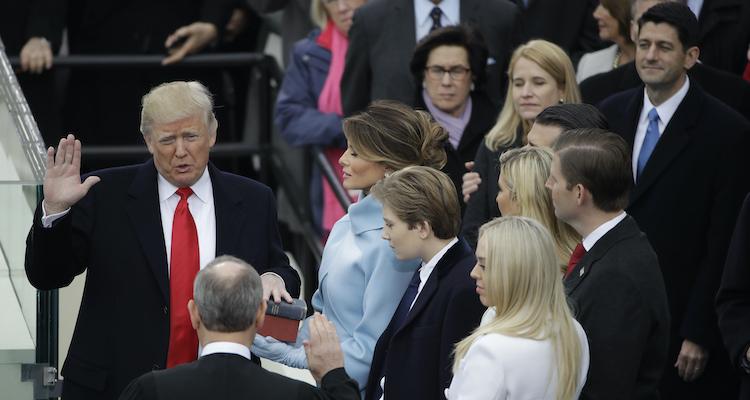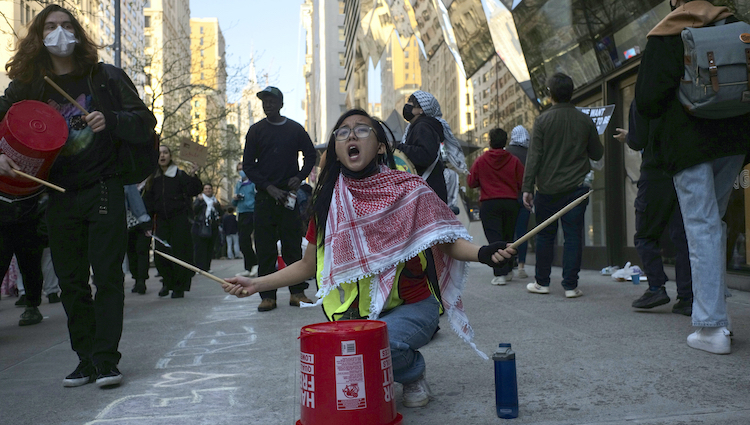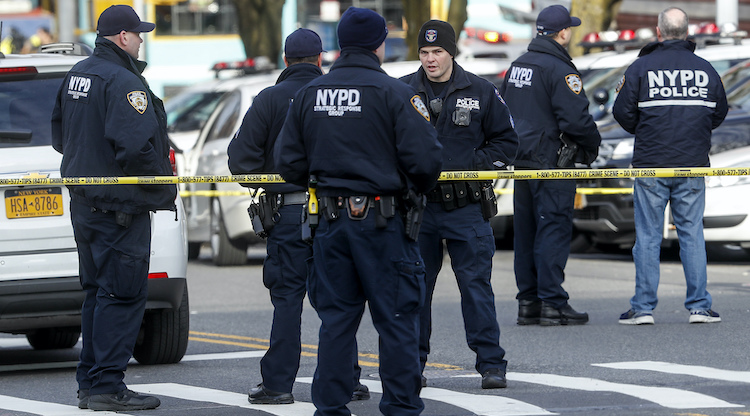Soon after Donald Trump announced his presidential candidacy in June 2015, a highfalutin debate broke out about how to understand this bewildering event. The debate intensified in the next year after Trump prevailed in the Republican primaries. Was the reality-TV demagogue a throwback to the bygone populist tribunes who had long been relegated to the margins of the nation’s political life? Or was the newly minted Republican a more familiar type, the culmination of the modern conservative movement?
Nearly a decade on, this intellectual row has seen little resolution. In his new book, Rebellion, the historian Robert Kagan proposes to resolve it by splitting the difference. Against the prevailing wisdom, which falls on one side or the other of this chasm, Kagan argues that the contending visions of Trump as either a premodern populist or a contemporary conservative is a distinction without much difference.
In this engaging and often surprising volume, Kagan puts forward an alternative hypothesis: The Trump phenomenon in American politics is simultaneously an eruption of an anti-liberal tradition “as old as the republic” as well as the ignoble residue of conservative dogma as it has evolved in modern times. Any suggestion that Trump represents a stark departure from national tradition or from the conservative creed is thus rendered as little more than a pious fiction.
Rebellion opens with an astute chapter about the new theory of government born out of the American Revolution. The founding of the United States established a genuinely liberal regime on the premise of universal equality and individual liberty. Echoing Gordon Wood, Kagan illustrates how the “radicalism of the American Revolution” conceived the purpose of government as securing “unalienable” rights to life and liberty.
In 1776, Americans might have pointed to the violations of their traditional rights as Englishmen and declared their independence from Britain without much fanfare. They might have waged a bloody, fratricidal struggle without declaring the equality of all men. But America’s distinct liberal radicalism inhered in the imperishable claims of its Declaration of Independence, which the Founders held to be self-evident. More than the musket fire at Lexington and Concord in 1775, the decision a year later to inject a philosophic assertion into a revolutionary document was truly the shot heard round the world.
Rebellion reminds readers that, although Jefferson and his colleagues at Philadelphia believed themselves to be capturing the “common sense of the subject” in the fledgling colonies, and having composed a charter as an “expression of the American mind,” there was profound resistance to its core tenets. Kagan is at the height of his powers in explaining that the American Revolution “did not just produce a new system of government dedicated to the protection of the rights of all individuals against government and community.” It also produced “a reaction against those very liberal principles.”
Rebellion delves deep into the “dissident tradition” that sprang up in “the formative years of the new republic.” Its “core and beating heart” was the slaveholding South. Repudiating the nation’s founding precepts, its leaders were no revolutionaries. As John Calhoun and Jefferson Davis pointed out, not without justification, the antebellum South was resisting revolution. For its part, the postbellum South followed suit.
The antique traditions of slavery and segregation, Kagan shows, were directly threatened by the constitutional order “and the liberalism it protects.” Long after chattel slavery and white supremacy were dismantled by force, more prosaic traditions remained put upon by the liberal order. In different guises, the reactionary view of government and society has appeared and reappeared throughout American history. Seldom has it been dormant. And never yet has it gone extinct.
The resilient anti-liberal tradition, as Kagan deftly summarizes it, seeks to “preserve ancient, traditional hierarchies of peoples and beliefs against the leveling force of liberalism.” Against the Founders’ vision, it views America in “ethnoreligious terms” as a fundamentally white state and a “biblical republic.” It indulges vulgar conspiracy theories about the American system as well as “cosmopolitan” forces in the world and the body politic that bear a striking resemblance to the anti-Semitic tracts of yore.
Although adherents of this anti-liberal ideology have long been engaged in the tussle of democratic process, they have tolerated its writ, and its impositions, only when it has suited them. When the ballot box failed their cause in 1860, they bolted from the Union. And when democracy turned back the anti-liberal cause in 2020, the idea of nullification stirred again.
In our day, the crisis of American democracy, narrowly construed, is the result of the boorishness and malevolence of one man and of the vast swathes of American society that yielded to his misrule. The riot at the Capitol on January 6, 2021, should lay to rest any notion that Trump harbors any allegiance to constitutional principles. Kagan is justifiably gripped with anxiety by the prospect of Trump’s return to the White House, and by his larger anti-liberal rebellion achieving success after its initial failure.
It must be said, however, that Kagan detects the anti-liberal impulse in curious places. There can be no doubt that the Republican standard-bearer is richly imbued with the qualities identified by the Founders when they warned that demagogues were the “great pests” of representative government. But if Trump personifies the potent and persistent anti-liberal revolt against the American system, whence did Trump come? Kagan’s answer is uncharacteristically tidy. “A straight line,” he observes, “runs from the slaveholding South in the early to mid-nineteenth century to the post-Reconstruction South of the late nineteenth and early twentieth centuries, to the second Ku Klux Klan of the 1920s, to the Dixiecrats of the 1940s and ’50s, to Joseph McCarthy and the John Birch Society of the 1950s and ’60s, to the burgeoning Christian nationalist movement of recent decades, to the New Right of the Reagan Era, to the Republican Party of today.”
In support of this sweeping contention, Kagan dwells on the anti-liberal urges of the “new” right. Beginning in the 1950s, a new conservative intellectual movement took shape that, in this telling, recapitulated the classic European anti-liberal critique of liberalism, “ostensibly justified by a Burkean respect for tradition.” Seeking to assemble a three-pillared edifice of strong defense, traditional values, and growth-oriented economics, William F. Buckley Jr. embodied this new adversarial ideological persuasion. In the pages of National Review, Buckley (with Russell Kirk—as well as a bevy of former Communists such as James Burnham and Whittaker Chambers) fought a rearguard action against what they perceived as the excesses of modern liberalism.
However, Kagan posits that it’s truer to say that it was liberalism itself that Buckley and his colleagues inveighed against. It was not the American Revolution to which Buckley and his allies appealed, but rather to a tradition of Anglo-Protestant white supremacy. Buckley claimed to be standing “athwart history, yelling Stop!,” but Kagan views this as opposition not to history as of 1957; “it was history as of 1776.”
This is overwrought. Although Buckley’s National Review exhibited a doctrinaire libertarian fear of “omnipotent government” and initially supported the South’s resistance to desegregation—Buckley famously and disastrously squared off on that motion against James Baldwin in a Cambridge debate—it did not settle into an alliance with the forces of anti-liberalism below the Mason-Dixon Line. Alabama Governor George Wallace did not receive good press in National Review and the arch segregationist encountered an exquisitely abusive host on Buckley’s Firing Line. After repudiating his racist assumptions in defense of the South, Buckley became sympathetic toward the cause of civil rights and granted that federal intervention was amply justified.
Meanwhile, his quasi-religious anti-Communism led Buckley to show undue lenience toward Joseph McCarthy’s feverish and unscrupulous methods. But here, too, Buckley was not, as was once said of the old German ruling class, blind in the right eye. Many conservatives followed McCarthy in deliberately blurring the distinction between liberalism and Communism, as if liberal principles were part of the totalitarian temptation, but Buckley staunchly resisted such moral and intellectual slovenliness. Rebellion fails to mention that Buckley picked an open fight with the John Birch Society (which accused President Eisenhower of being a Communist) and made a point of assailing the fringe anti-Semites and provincial isolationists of the old right. Is this really the voice of anti-liberalism that needs to be read out of respectable society? And if so, what could have prodded Daniel Patrick Moynihan—no reactionary, he—to declare, in 1981, that “of a sudden, the GOP has become the party of ideas”?
This excessively critical reading of modern conservatism is an error that begets others. For instance, Kagan insinuates that immigration restrictionism is inherently anti-liberal. Opposition to open borders certainly attracts its share of xenophobes and ethnic chauvinists, but tighter immigration policy is not solely or even chiefly the preference of bigots and yahoos. There are pragmatic reasons to reform America’s inefficient and capricious system of mass immigration, which has bred intergenerational disadvantage among low-skilled new-comers while aggravating the liabilities of the welfare state. At a time of stubborn inequality and growing social alienation, cosmopolitan conservatives seeking to tailor immigration to the public interest—in order to boost mobility and enhance assimilation—deserve approbation, not aspersion.
Kagan also betrays an insufficiently nuanced view of race relations. He claims that Black Lives Matter formed after a white vigilante murdered Trayvon Martin in 2012. In fact, Martin’s killer was Hispanic, and he was acquitted of murder charges by a jury of his peers. More alarmingly, Kagan asserts that Americans who once assumed that the civil-rights victories of the 1960s had “reduced the levels of prejudice” struggled to account for the persistence of racism in law enforcement and the legal system. Fortunately, the implication that racial prejudice remains deeply embedded in these domains is not borne out by any hard evidence. The fact that America’s political coalitions have become less polarized along racial and ethnic lines also undercuts the general depiction of a reactionary “white backlash.”
Observing that “wokeness” has become the target of “antiliberal conservatism,” Kagan elides the fact that it has also become a target of liberal conservatism and, for that matter, old-fashioned liberalism. Without defining “wokeness,” Kagan suggests that the racial reckoning of our day is “the inevitable by-product of the liberal system the Founders created.” (Perish the thought.) He casts this divisive phenomenon as a laudable effort among formerly oppressed groups to achieve enhanced respect and dignity in society. But wokeness does not aim at giving minorities an equal footing—to be “no more or less privileged” than anybody else, as Kagan phrases it. Flowing from critical race theory, it embodies a patently anti-liberal worldview, rooted in pigmentation, contemptuous of e pluribus unum. Its framework—to pluck from the New York Times’ 1619 Project—presents America as a democracy whose “ideals were false when they were written.” Nota bene, this is an indictment not of the contradiction of American ideals by the unconscionable fact of slavery and segregation, but rather of the ideals themselves.
_____________
There is a pithy explanation for Kagan’s complacency about the anti-liberalism of the left: He doesn’t think it’s anti-liberal. He appears to believe that “the antiliberal forces” in the country have recently consolidated on the political right. Indeed, he writes, “by the 2000s the Republican Party pretty much had them all.” This claim belies the modern left’s evolution that by any objective standard must be called reactionary: welcoming if not encouraging conspiracy theories about 9/11 and the Iraq War; fashioning a cult of personality around Barack Obama that accelerated the march to an imperial presidency; embracing race essentialism; abridging free speech in deference to those who claim to be victims; and, at present, courting regressive left-wing activists amid the recrudescence of anti-Semitism brought on by Hamas’s barbaric raid in Israel. All this suggests that the blight of anti-liberalism is a commonplace feature of American politics, not a partisan one.
Kagan’s blunderbuss approach to conservatism—seizing upon its woeful modern condition to anathematize nearly the entire American right—is a double mistake. First, it impedes our perception of the full scale and force of anti-liberalism in our national life, which has reached a high pitch in “blue” and “red” America alike and exerts a powerful influence in both parties. Second, by misapprehending the true cause—or, better put, causes—of our anti-liberal temper, it forestalls an effective cure at the very moment that Donald Trump may be poised to return to the nation’s highest office.
The liberal tradition, Kagan laments, nurtures a belief in its own inevitability. “In the Enlightenment teleology, the American Revolution was an inevitable stage in the evolution of humankind.” This peculiar “mythology” leads liberals to chronically underestimate the power of anti-liberal sentiments and anti-liberal resistance. Remarkably, by failing to take the measure of the anti-liberal movements of the left, Kagan—good liberal that he is—shows signs of succumbing to this myth himself.
Such a recognition scarcely lets the conservative movement or the Trump-dominated GOP off the hook. The proximate cause of Trump’s rise lies with the political right. An undisguised demagogue who regards republican virtue with indifference bordering on contempt would never have pulled off a successful insurgency against a healthy and vigorous conservative party. In the decade before Trump’s hostile takeover, the Republican Party had been reduced to an electoral rump, a minority coalition alternating between stoking and ignoring working-class grievances.
The intellectual infirmity and moral torpor of the contemporary conservative and Republican world have been dismal to behold. Once a distinctly un-conservative imposter came into their midst, the commitment of party regulars to conservative principles (or at least what many self-declared conservatives proclaimed them to be) was tested and found wanting. Given Trump’s dearth of republican virtue, and the corresponding danger this posed to the country, the broad acquiescence to Trump as the Republican nominee also pointed to an attenuated sense of honor among a sullen Republican establishment.
Even so, without a left shot through with anti-liberal sentiments of its own, the Democrats would likely now be America’s majority party. It’s worth recalling that Trump rallied a constituency that was unmoored from party allegiance and that had been cast aside by both the progressive establishment and the Obama administration. Trump’s core support resides not with archconservatives but rather with the white working class (and, increasingly, the multiracial working class). This hard-pressed cohort had traditionally voted Democratic, favoring a hefty welfare state. Before Obama, Democrats could be culturally conservative on a range of issues, from abortion to immigration, and remain in good standing on the left. No more.
Somewhat begrudgingly, Kagan endorses the bien-pensant conceit that Trump is a latent fascist. The blizzard of lies and obfuscations issued by Trump after his defeat in the 2020 election, and the “mobocratic” spirit that led to the riot at the Capitol, certainly vindicated a certain liberal alarmism. But it doesn’t require a lax attitude toward Trump’s menace to the constitutional order to note that Americans today show no great enthusiasm for political violence. Notwithstanding Trump’s sound and fury against democratic norms, his record in office, reflecting his disordered character, suggests an idle and inept kleptocrat more than a ruthless dictator seizing power like the 18th Brumaire.
The rise of the fascist metaphor in the Trump era has fed exaggerated fears about the twilight of democracy while overlooking more serious risks about the corruption of the political establishment that will tempt a more prosaic fate: national decline. It also doesn’t make sense on its own terms: If there were an actual prospect of the “dissolution of American liberal democracy,” as Kagan suggests, then Democrats’ extremism and adoption of boutique beliefs look not merely imprudent but downright scandalous.
The Trump interlude has been made possible, as Kagan notes, not chiefly by economic distress or this or that war, but by “the people and their beliefs.” There is more than a kernel of truth to this. However, liberals are not immune from this judgment themselves and need to reckon with the consequences of their own beliefs and behavior. Trump is neither an exclusively Republican nor Democratic problem. Nor is he, given the depth and breadth of America’s international responsibilities, an exclusively American problem. The vital task of evicting Trump from the political arena, and emerging stronger from the crisis of which he has been both symptom and cause, is the work of legitimate patriots from sea to shining sea.
When enjoined on his deathbed to renounce the devil, Voltaire murmured that this was no time to be making enemies. If liberty is as imperiled as Kagan makes out—as indeed it is—the time is past when liberals in the United States can afford to seek out phantom foes. By any measure, they have a profusion of real ones. Better that liberals of all stripes close ranks and fight them.
Photo: AP Photo/Matt Rourke
We want to hear your thoughts about this article. Click here to send a letter to the editor.




